
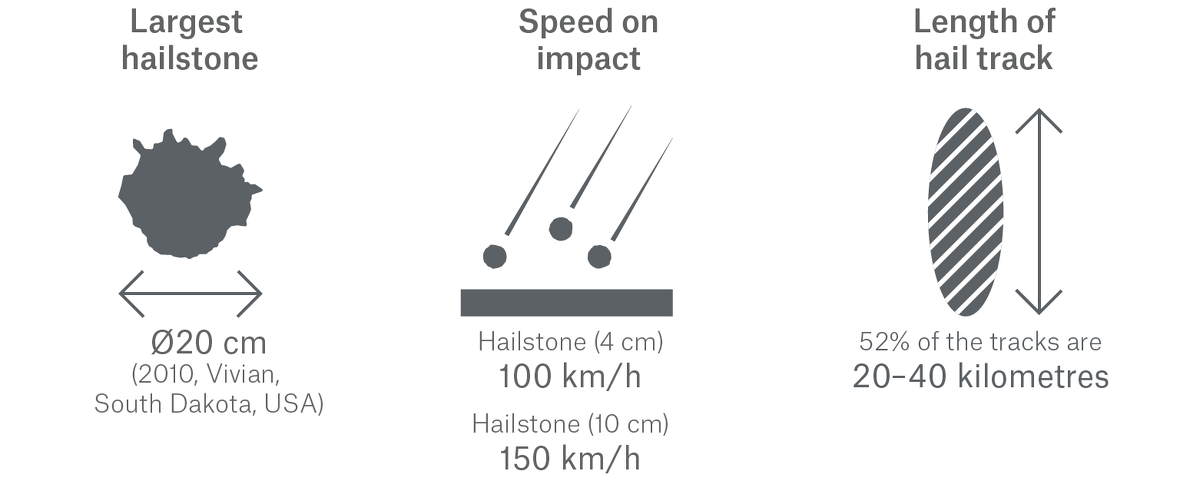
In places, lumps of ice the size of tennis balls and almost a million damaged buildings: in July and August 2013, record-breaking hailstorms pummelled the German states of North-Rhine Westphalia, Lower Saxony, Baden-Württemberg, Bavaria and Saxony. The typical damage profile included smashed roof tiles that allowed rainwater to leak into buildings, wrecked solar installations, holes punched in façades, and damaged cars. In some parts of the Tübingen-Reutlingen district in the state of Baden-Württemberg, 90% of all buildings were affected. In total, the losses for German motor vehicle and property insurers from the 2013 hailstorms came to more than €4bn, with building damage accounting for €3.1bn of this figure. The largest hailstone measured around 14 centimetres in diameter, setting a new record for Germany. So, what can we learn from events like this?
Is the incidence of hailstorms increasing because of climate change?
As part of a doctoral thesis carried out with the support of Munich Re in collaboration with the European Severe Storms Laboratory (ESSL), a new statistical method (“AR-CHaMo”) was developed that uses large-scale observations (so-called reanalysis data) to derive the probability of localised severe thunderstorms for the period 1979 to 2015. This study shows whether hailstorms have actually become more frequent and, if so, in which areas. The results indicated that climate change may be seen as a contributory factor since higher temperatures can explain the increases in humidity established in the thesis.*
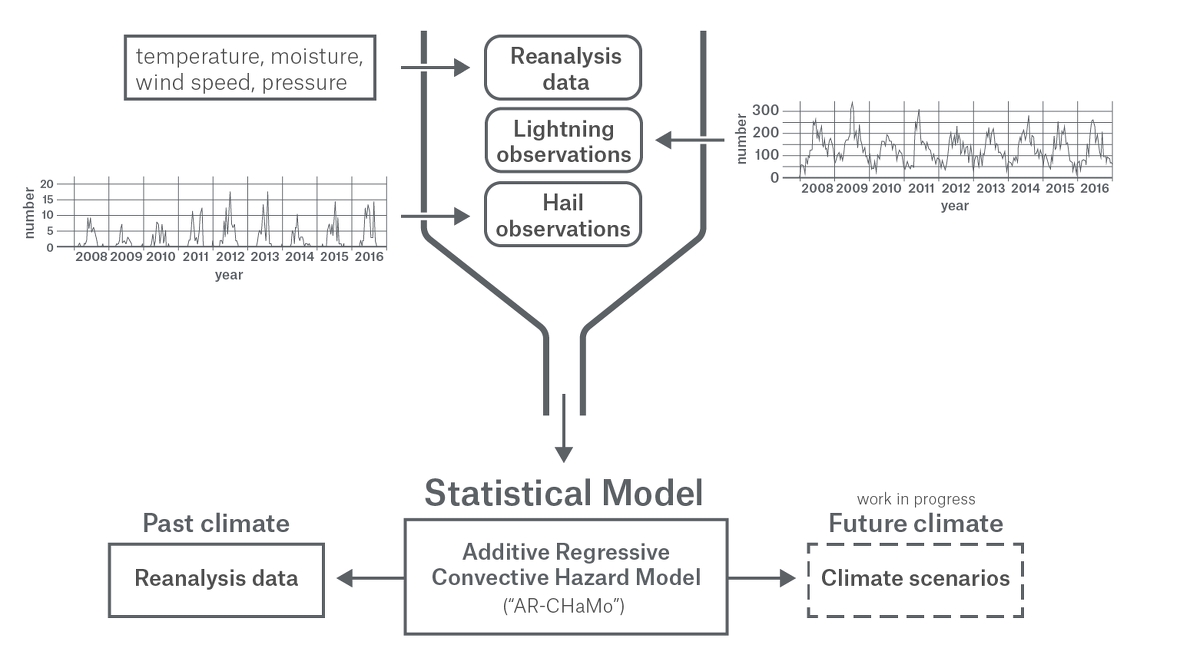
The results:
- The most frequent hailstorms with hailstones larger than 2 cm occur in northern Italy, Romania, in the Pyrenees and in the Balkans. Hailstorms occur much more frequently in the south of Germany than in the north.
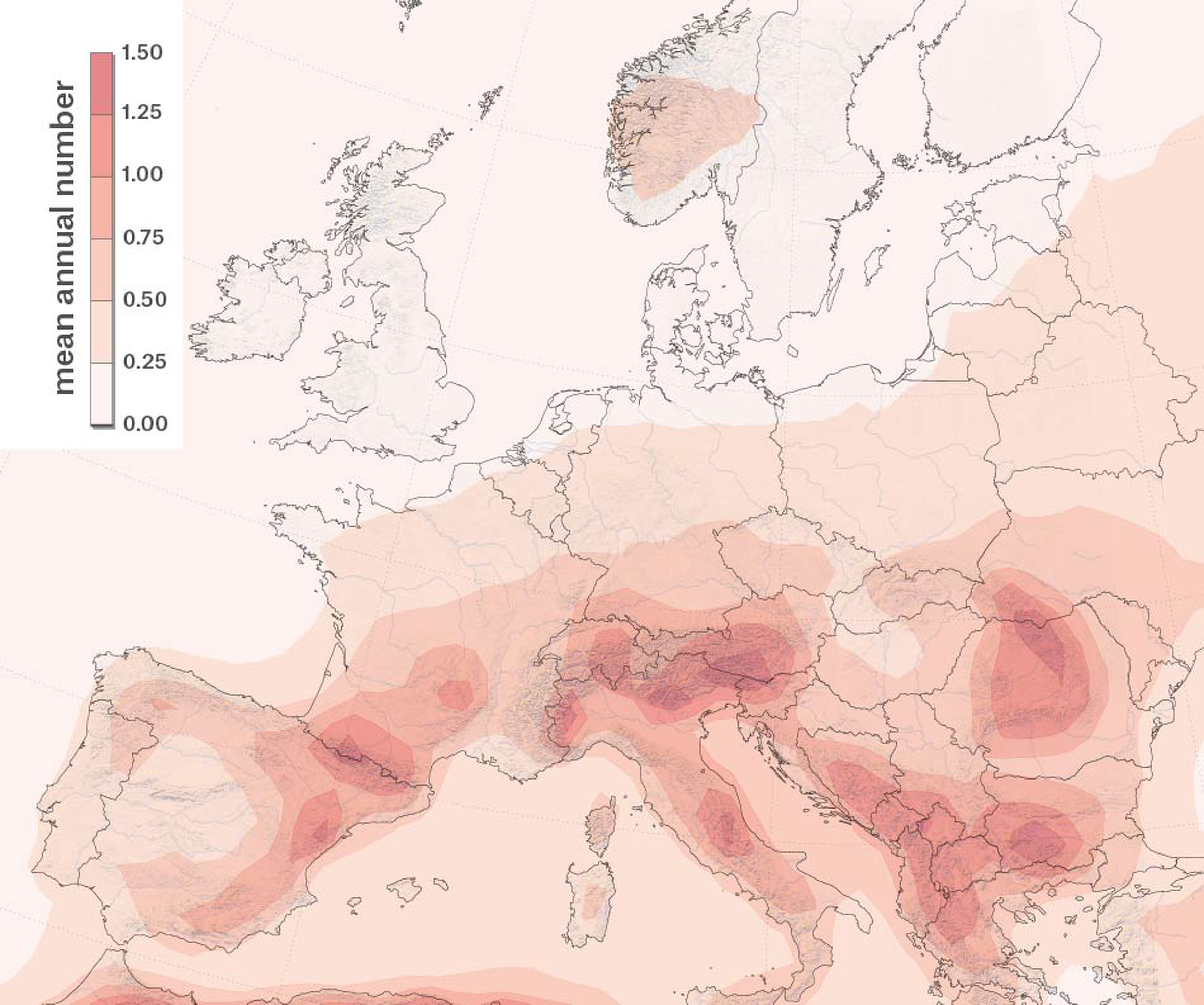
- Overall, the number of hail events increased significantly over the 37 years considered. The rise was particularly sharp in northern Italy and on the Adriatic coast, while the increases were smaller in central Europe – in France, the Benelux states and Germany. The study found slight decreases for southwest France and parts of the Iberian peninsula.
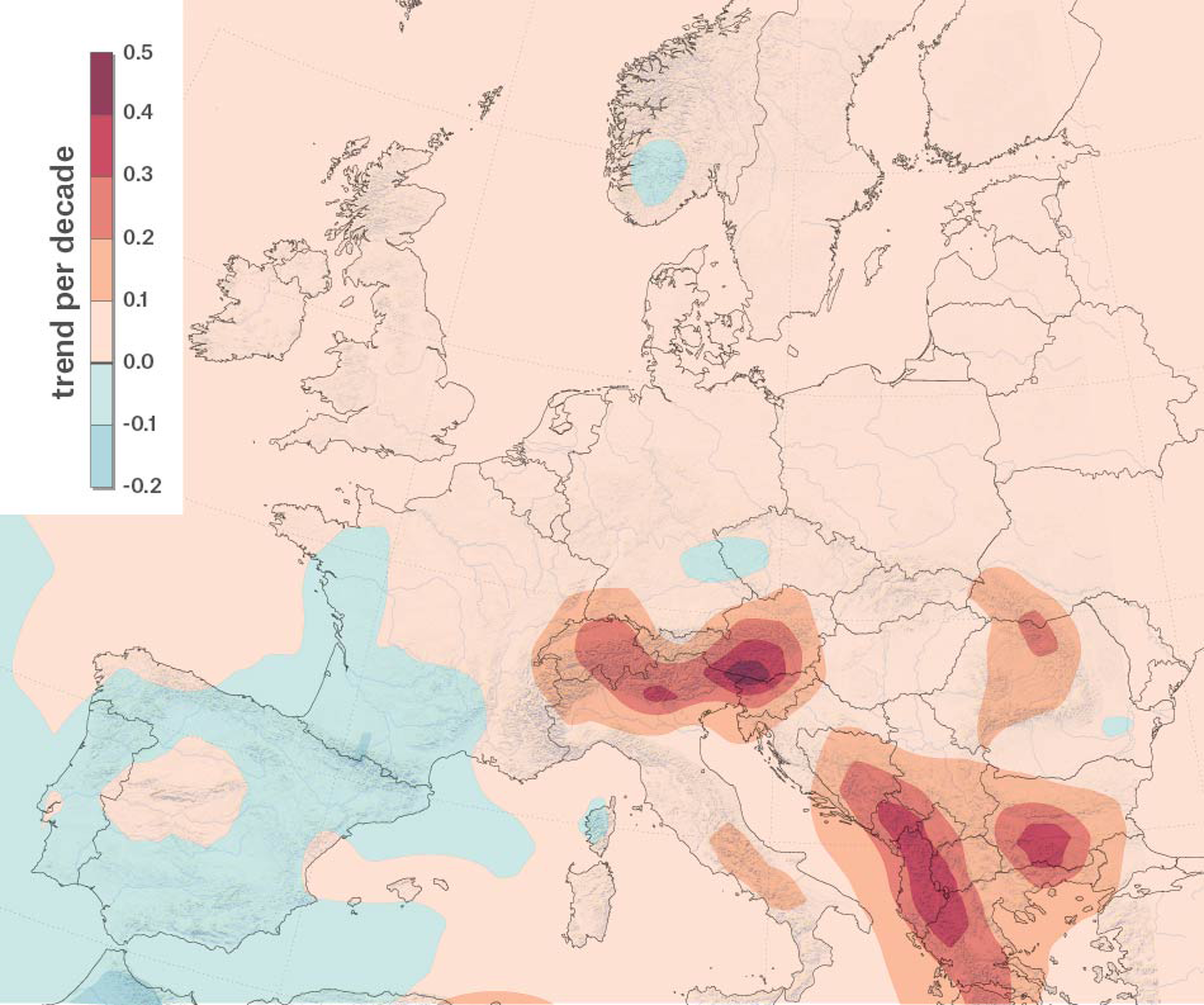
What needs to be done to prevent losses?
There are indications that modern buildings, for example in central Europe, are more susceptible to damage from hail. A particular focus is on solar installations, which are often unable to withstand larger hailstones. There is a similar problem with the exteriors of buildings. US insurers are therefore working closely with the IBHS (Insurance Institute for Business & Home Safety) Research Center, which is conducting the relevant resistance tests. However, one of the obstacles to any development of hail-resistant installations and materials in the near future is that many countries, Germany included, have no adequate regulations to provide better protection against hailstone sizes greater than 3–4 cm for peripheral installations on buildings.
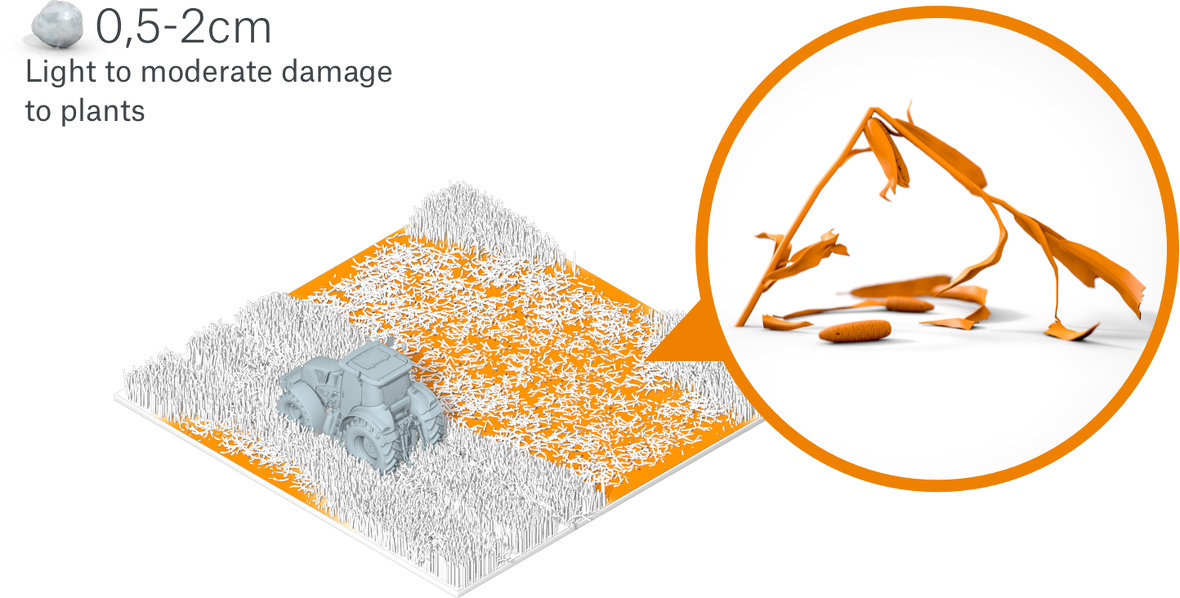
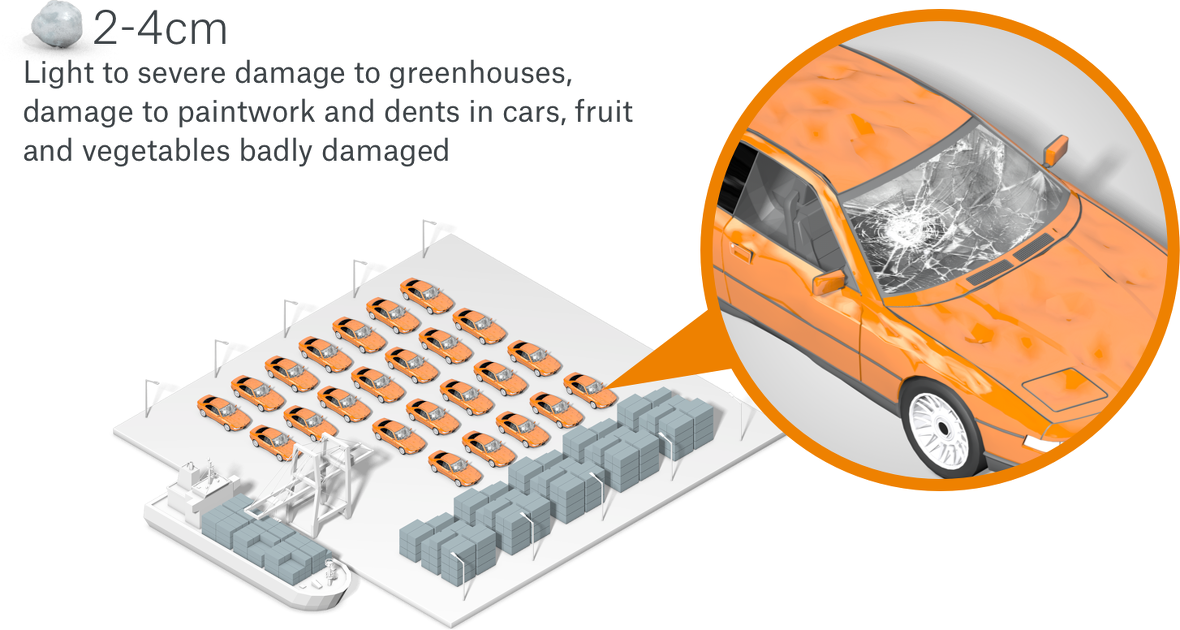
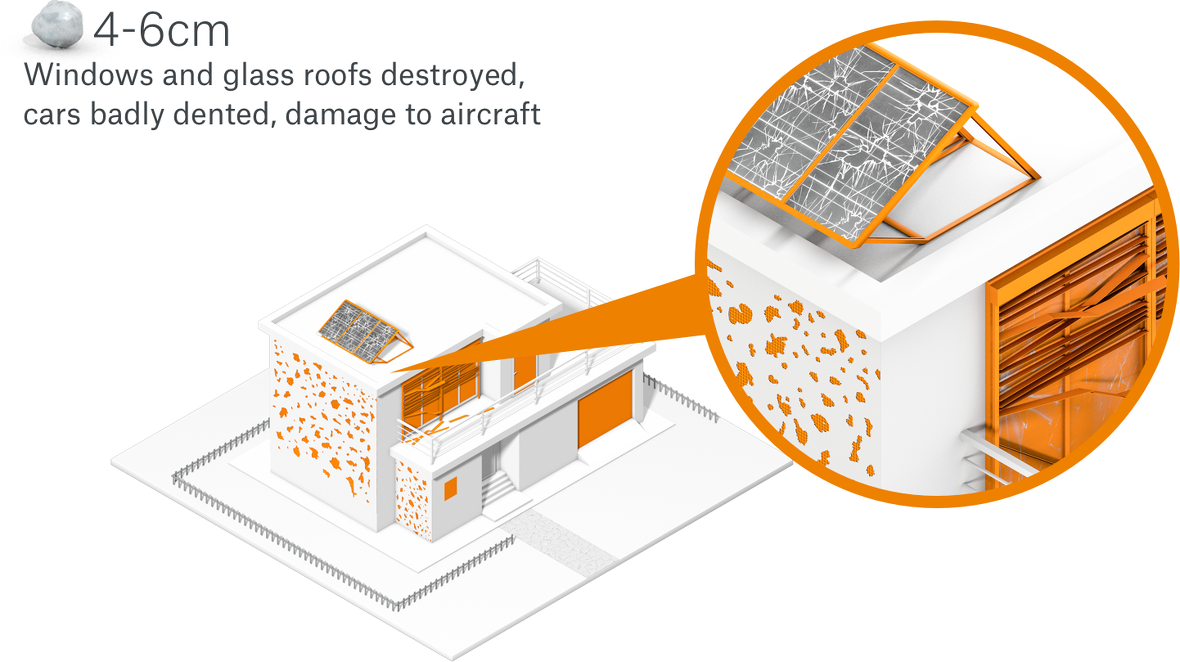
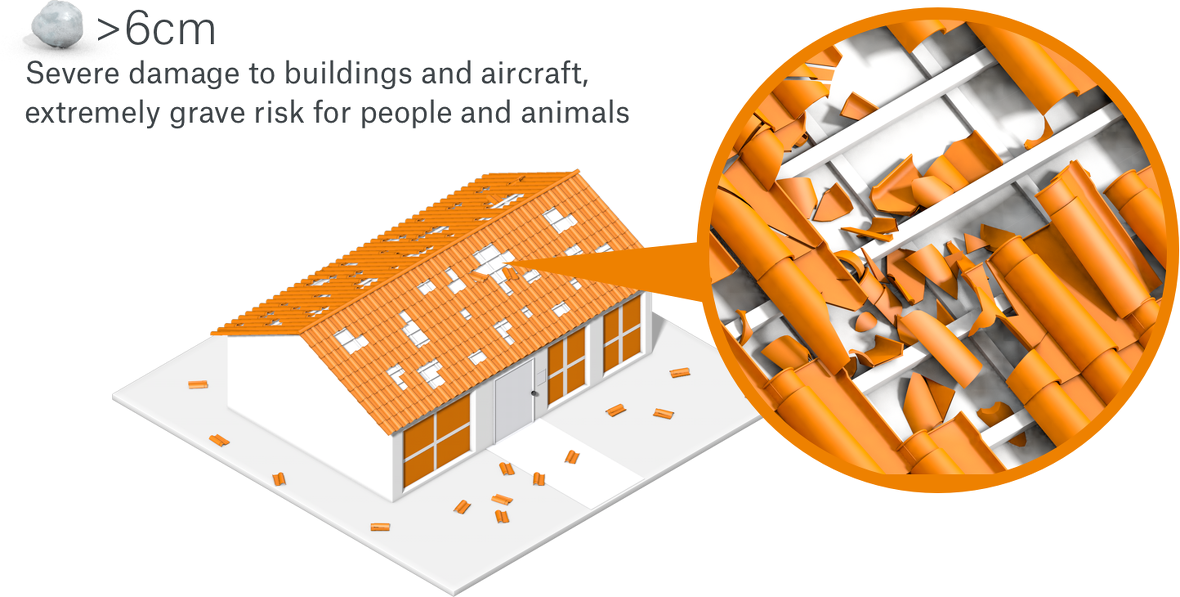
In Switzerland, where building standards are similar to those in Germany, the proportion of damaged buildings was systematically higher for more modern structures than for older ones: For example, in the canton of Aargau roughly 8% of buildings from the 1940s suffered damage in hailstorms, whereas the figure for buildings constructed after 2000 was 15%.
A look at Switzerland also shows how resistance to hail can be improved. The Swiss Hail Register (www.hagelregister.ch) was introduced in 2010 in cooperation with homeowner and insurance associations and the Swiss Society of Engineers and Architects. The initiative motivates manufacturers of construction materials and components to have their products tested and certified for hail resistance. The result is a central database with a certification mark for hail-resistant construction. An offshoot of this initiative is also operating in Austria.
For other countries, including Germany, an initiative of this kind to limit future losses would be highly desirable – not least because of the anticipated consequences of climate change.
* Rädler, A.T., Groenemeijer, P., Faust, E., Sausen, R., 2018: Detecting severe weather trends using an Additive Regressive Convective Hazard Model (ARCHaMo). J. Appl. Meteor. Climatol., DOI:10.1175/JAMC-D-17-0132.1
Munich Re Experts


Related Topics
properties.trackTitle
properties.trackSubtitle

